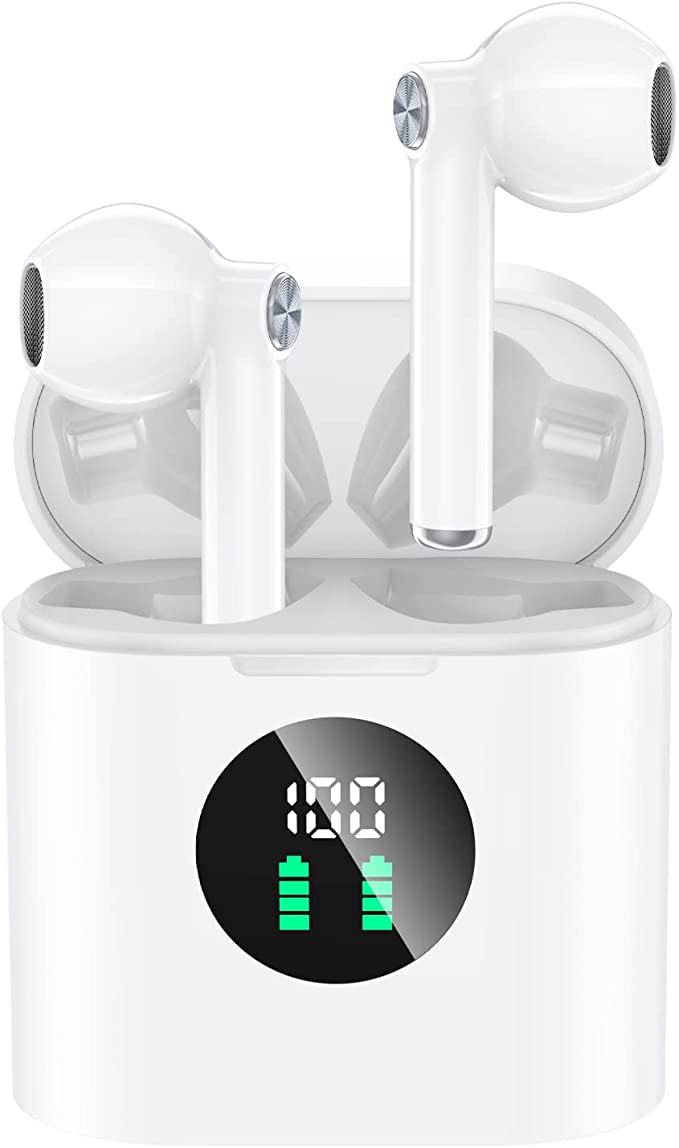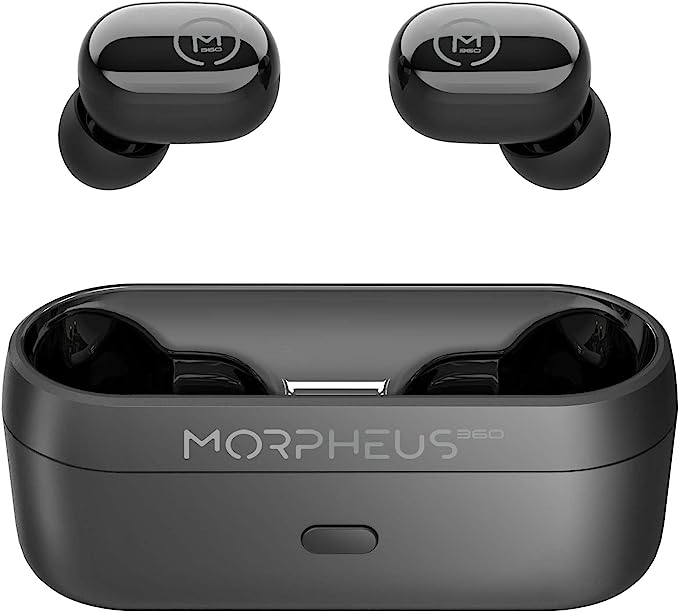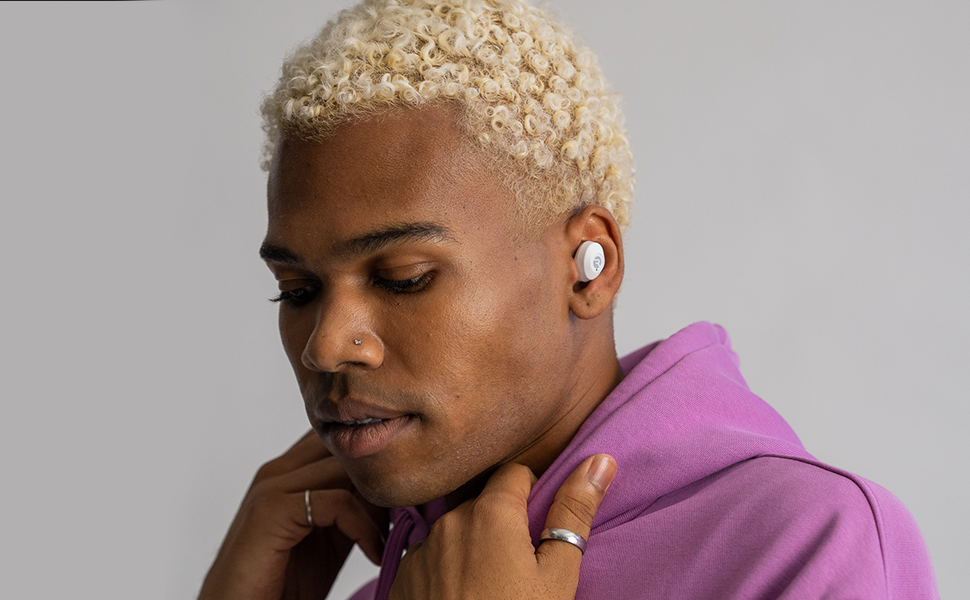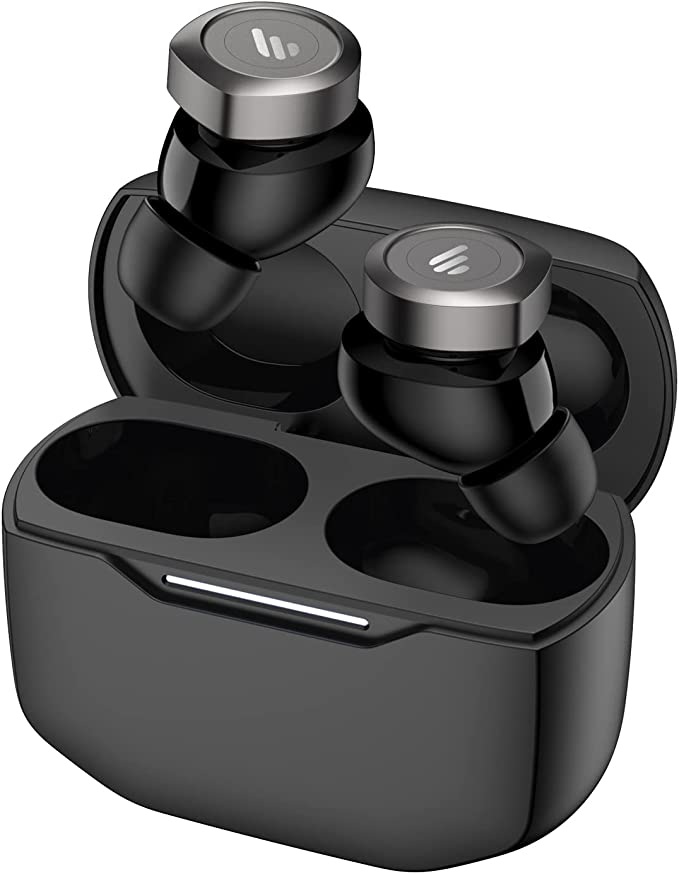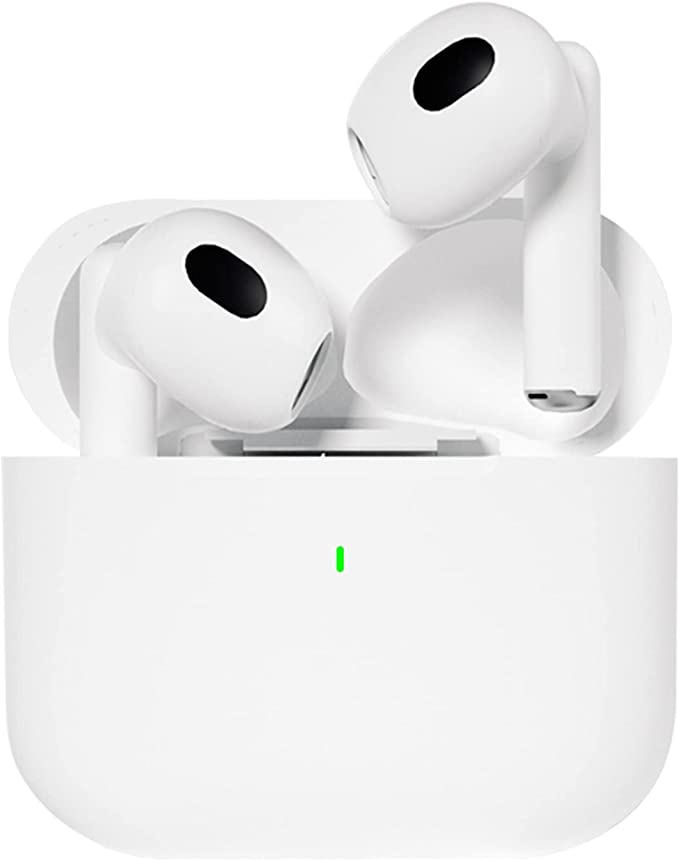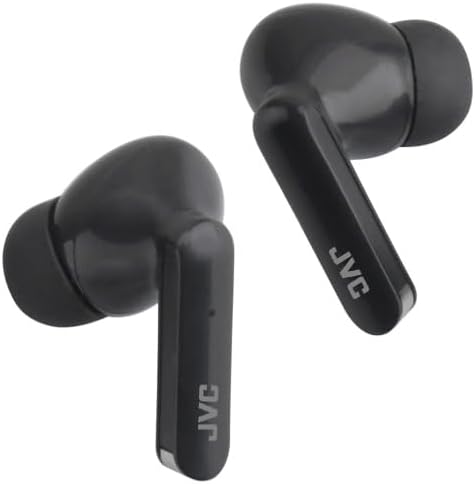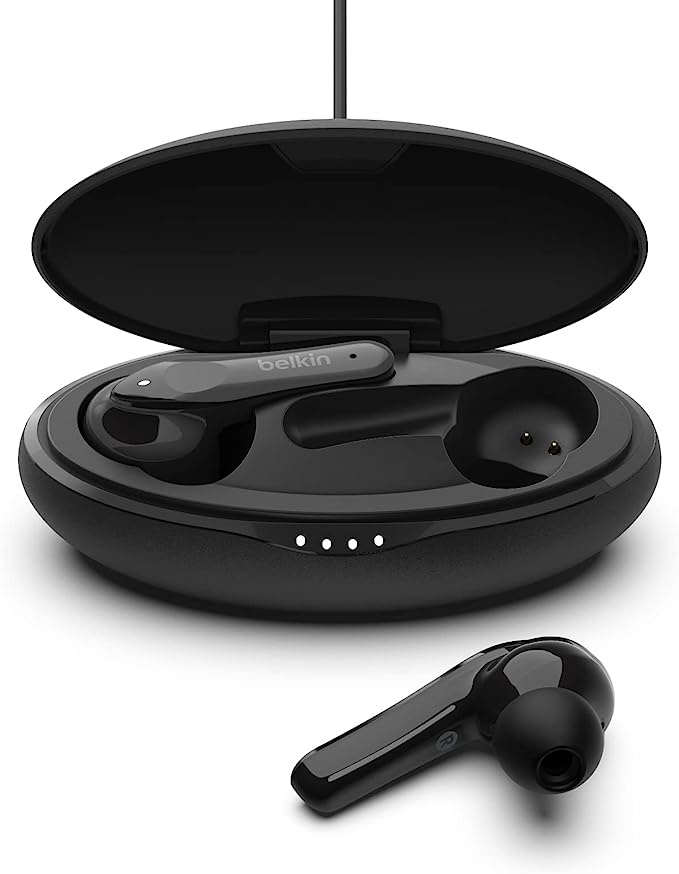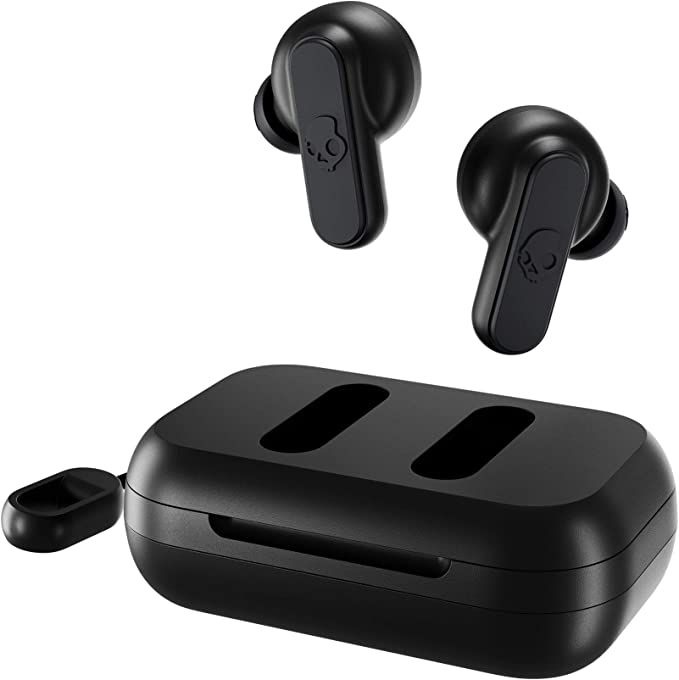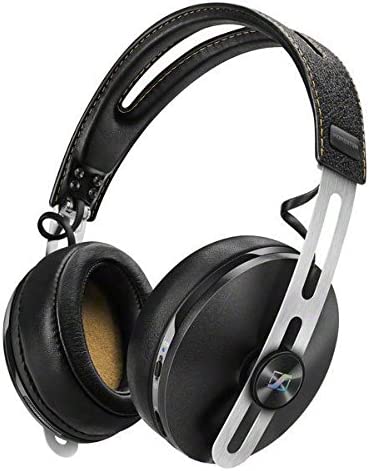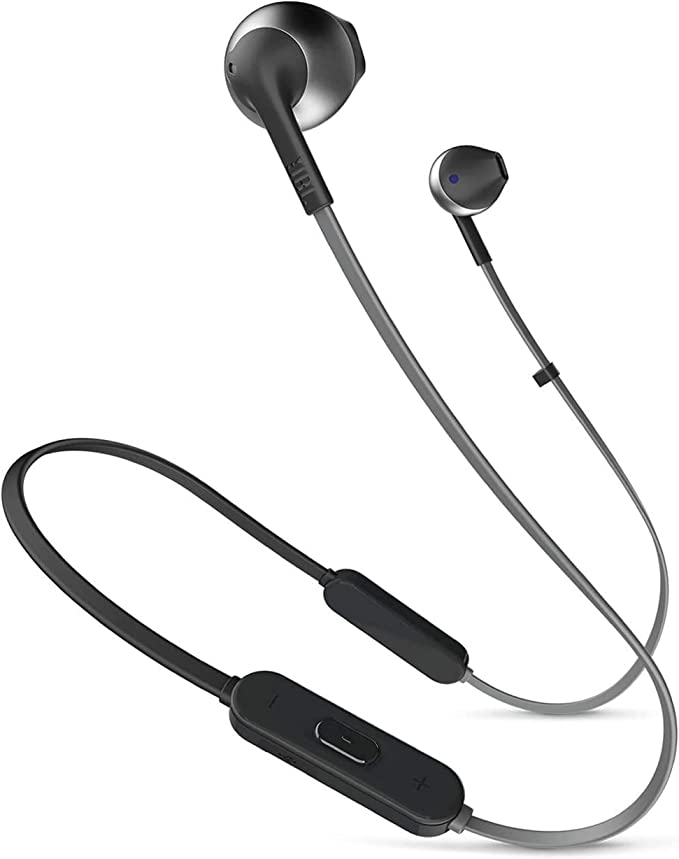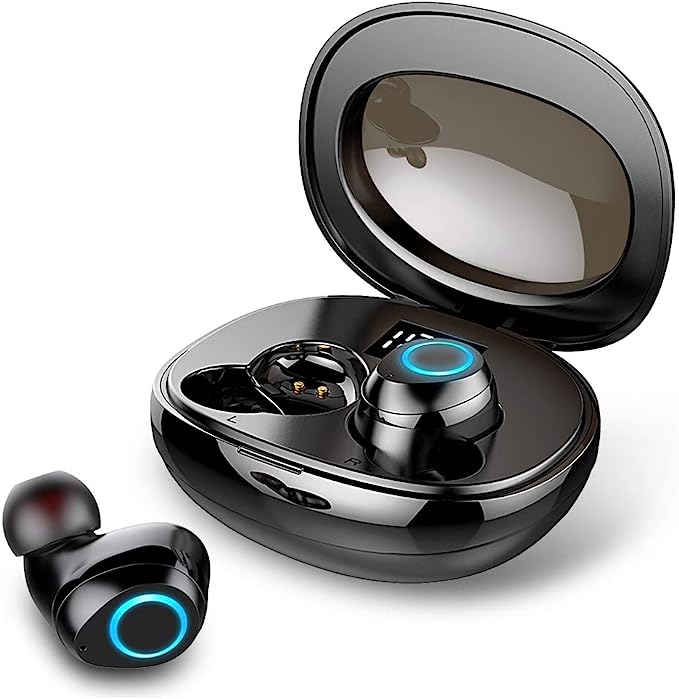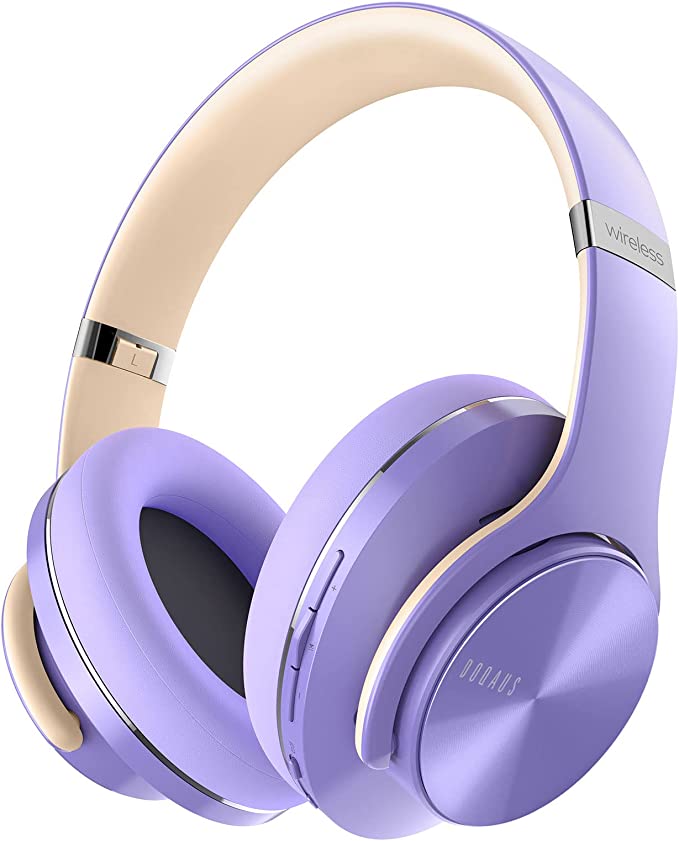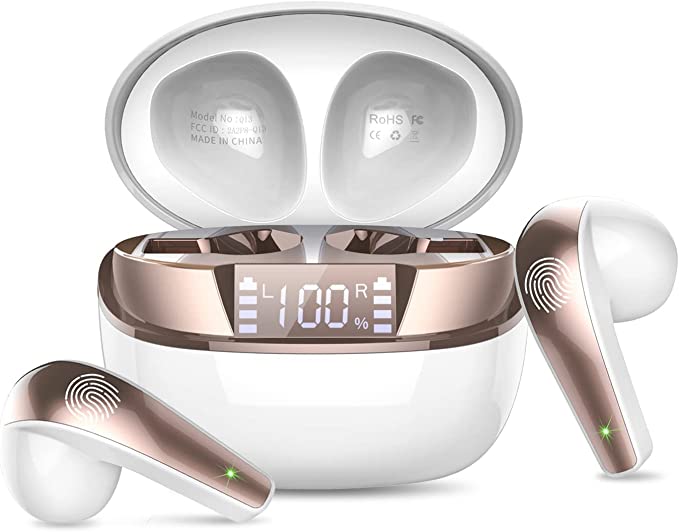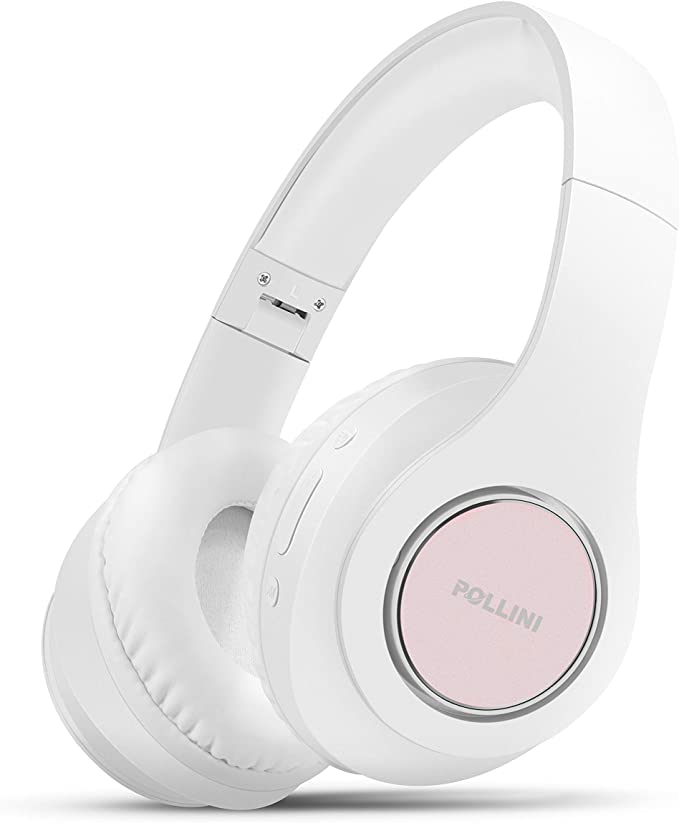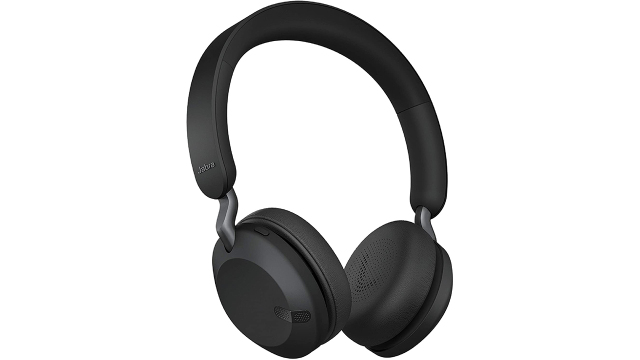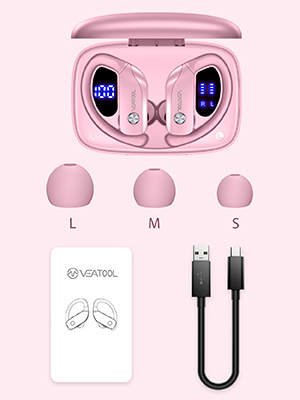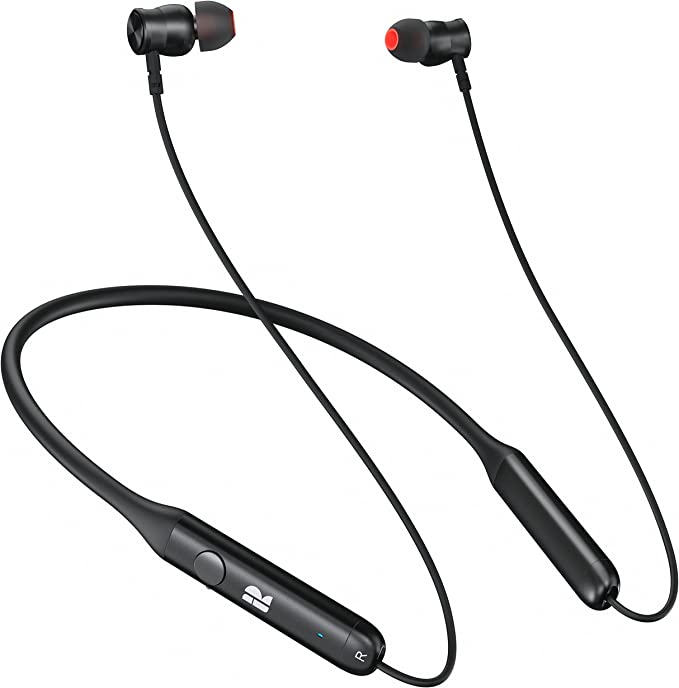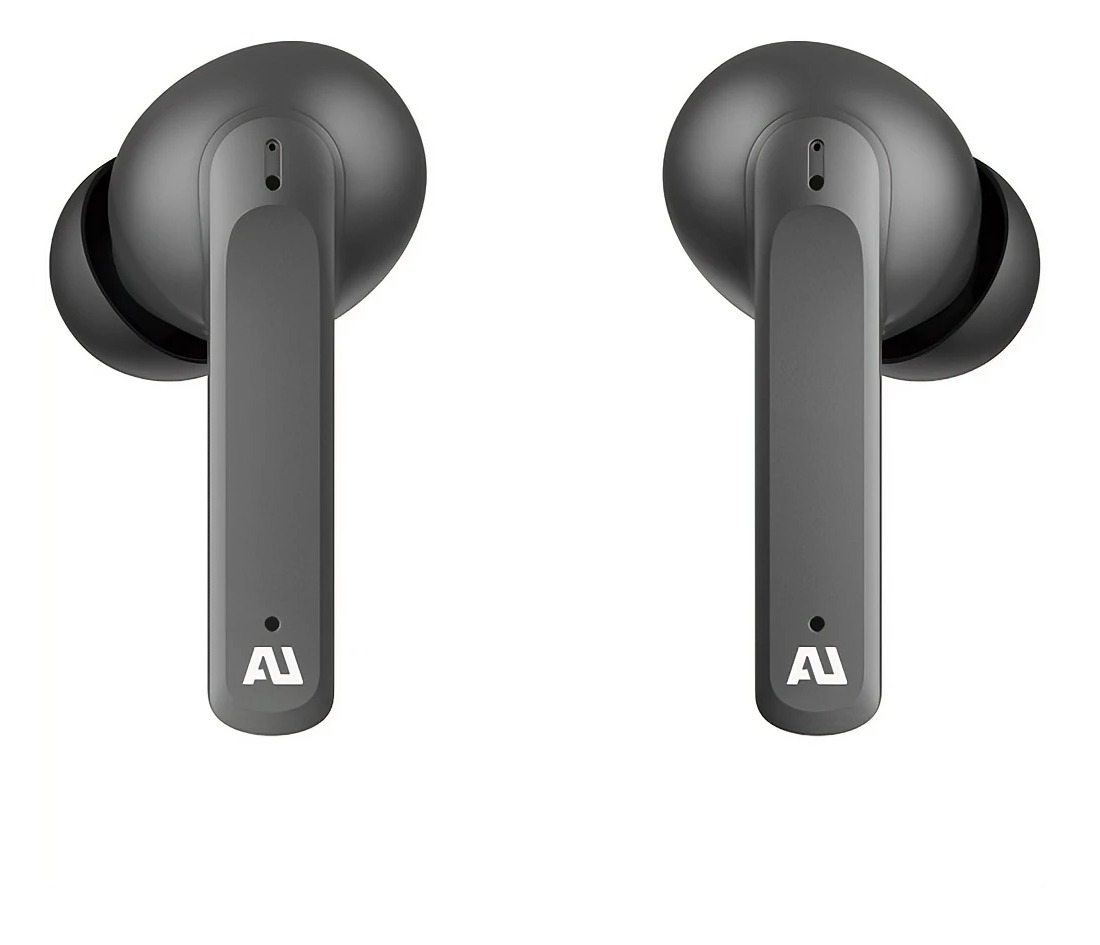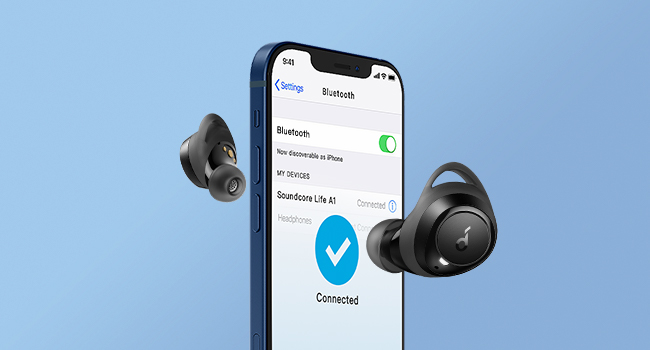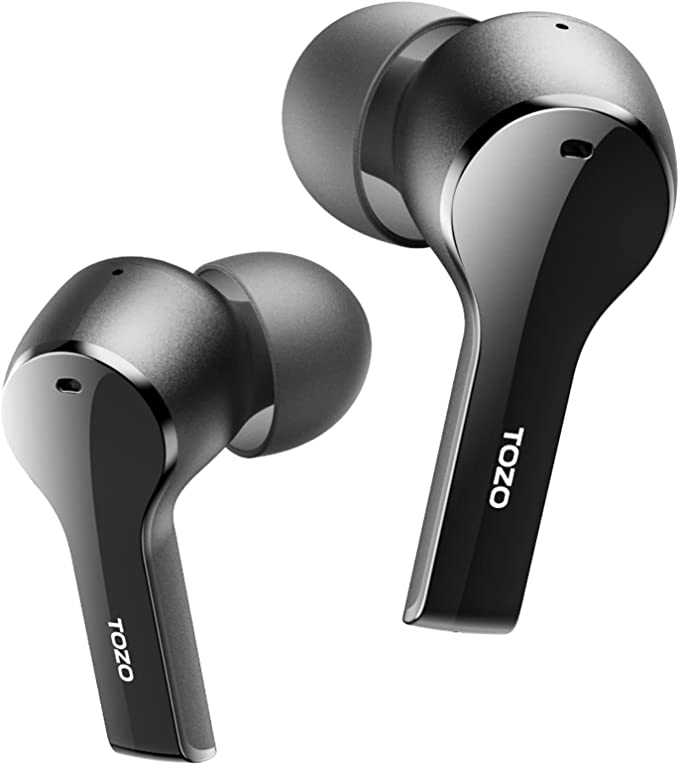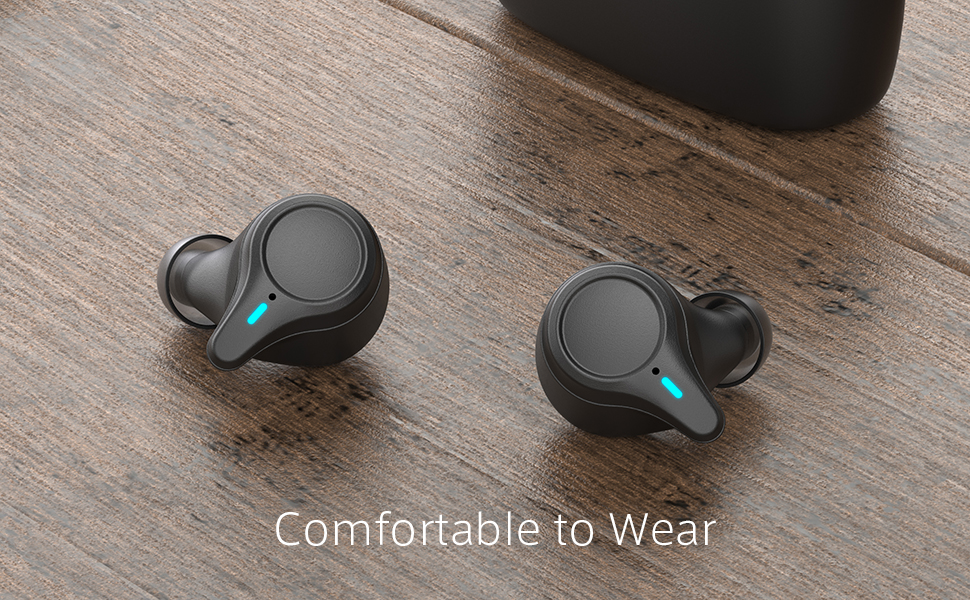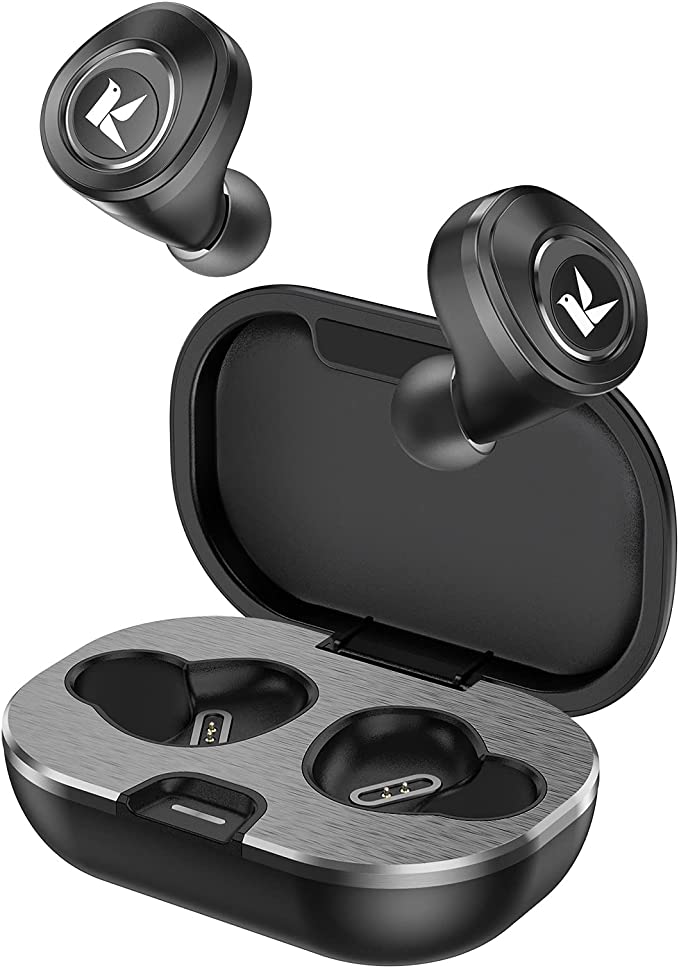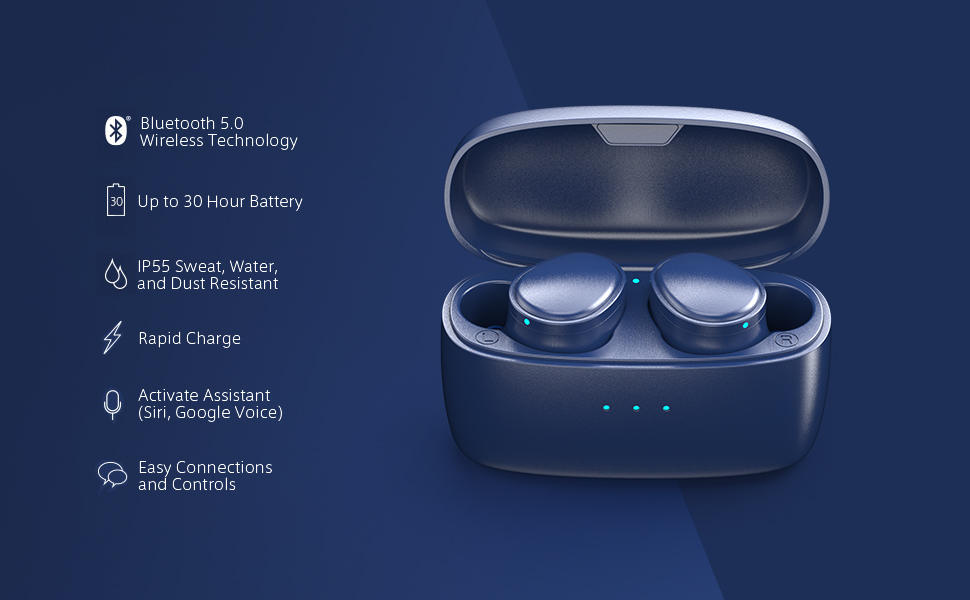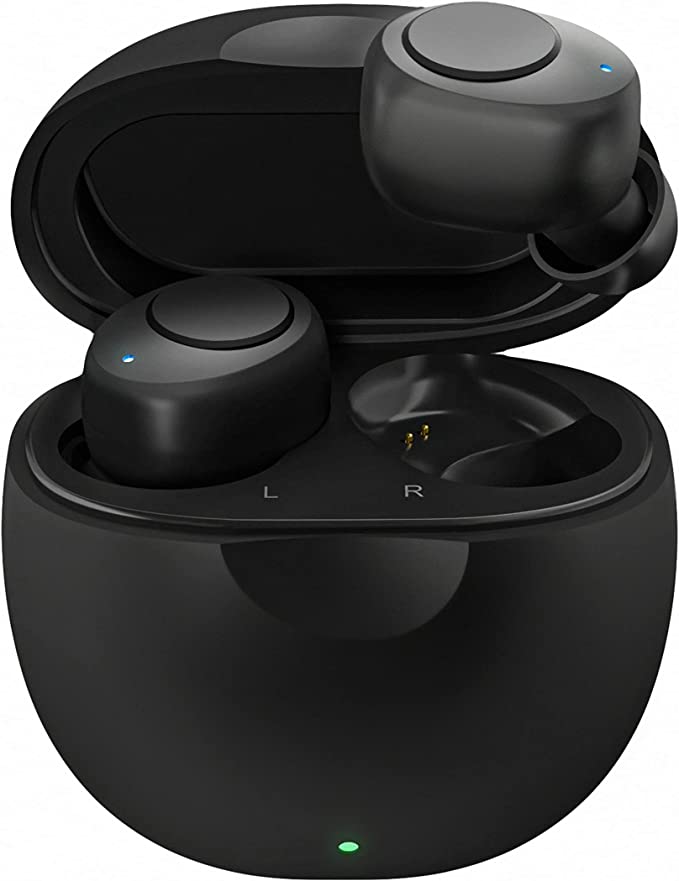EARJIA J3PRO True Wireless Earbuds: The Science Behind Seamless Sound and Smart Control
Update on May 15, 2025, 9:35 a.m.
Remember those not-so-distant days, wrestling with a Medusa-like tangle of headphone cords каждый раз (every time) you wanted to listen to music on the go? It feels like a lifetime ago, doesn’t it? Today, tiny, almost invisible True Wireless Stereo (TWS) earbuds have become ubiquitous, offering an untethered gateway to our personal soundscapes. This seamless convenience, however, is built upon a fascinating symphony of intricate technologies, working in concert just millimeters from our eardrums. While these advancements are often tucked away and taken for granted, understanding the science behind them can deepen our appreciation for these everyday marvels. Let’s embark on an exploration of this “invisible symphony,” using the EARJIA J3PRO True Wireless Earbuds as our case study to illuminate the core principles at play.

Act I: The Ethereal Handshake – Unpacking Bluetooth’s Enduring Spell
The very essence of “true wireless” freedom lies in a technology whose name, মজার ব্যাপার (interestingly enough), harks back to a 10th-century Viking king, Harald “Bluetooth” Gormsson, famed for uniting Danish tribes. Just as King Harald united disparate regions, Bluetooth technology, developed in the late 1990s by a consortium of tech companies, was designed to unite different electronic devices wirelessly over short distances. It operates using UHF radio waves in the Industrial, Scientific, and Medical (ISM) radio bands, from 2.402 GHz to 2.480 GHz.
Fast forward to today, and we encounter specifications like Bluetooth 5.2, which the EARJIA J3PRO claims to utilize. But what does a version number like 5.2 really mean for your audio experience? Each iteration of Bluetooth aims to improve upon its predecessors in key areas. Bluetooth 5.2, for instance, builds upon the strengths of Bluetooth 5.0 and 5.1 by introducing features that can lead to enhanced connection stability, greater power efficiency, and improved audio experiences. One of the significant advancements associated with this era of Bluetooth is LE Audio (Low Energy Audio). While the J3PRO’s product description doesn’t detail its specific LE Audio implementation, this new architecture is designed to operate at lower power, offer improved audio quality even at lower data rates (thanks to new codecs like LC3, which stands for Low Complexity Communications Codec), and enable features like Auracast™ broadcast audio, allowing a single source to transmit to multiple listeners. For a pair of earbuds, this translates to potentially longer listening times before needing a recharge, a more robust connection less prone to dropouts in crowded radio environments, and the ability to handle higher-quality audio streams more efficiently.
This robust wireless foundation is what enables features like the “automatic memory function” described for the J3PRO. After the initial pairing ritual – a digital handshake where your earbuds and source device (like a smartphone) exchange security keys and agree on communication protocols – the devices remember each other. Subsequently, taking the J3PRO earbuds out of their charging case allows them to quickly re-establish that trusted connection, making the process feel almost instantaneous.
Furthermore, modern Bluetooth facilitates the kind of flexibility seen in the J3PRO’s monaural and binaural modes. This means you can use a single earbud (monaural) – perhaps to take a call while keeping one ear open to your surroundings – or use both (binaural) for an immersive stereo sound experience. This isn’t just a software trick; it relies on the Bluetooth chip’s ability to manage connections and audio streams independently to each earbud, effectively making them, as EARJIA puts it, “equivalent to two independent earphones.”

Act II: Sculpting Your Soundscape – The Quest for Clarity and Quiet
Once the wireless connection is established, our attention naturally turns to the audio itself. But our world is rarely silent. From the rumble of city traffic to the chatter of a busy café, ambient noise constantly vies for our auditory attention. This is where the science of sound isolation and noise reduction comes into play, crucial for crafting that personal “cone of silence” where music or calls can be enjoyed without undue interference.
The first line of defense against unwanted sound is passive noise isolation. This is a purely physical barrier, akin to cupping your hands over your ears or wearing well-fitted earplugs. For in-ear earbuds like the J3PRO, this is achieved through their ergonomic design and the seal created by the silicone ear tips. The J3PRO’s description mentions it’s “ergonomically designed” to “perfectly fit the cochlea” and comes with three sizes of ear buds (large, medium, and small). Finding the right sized tip is paramount; a snug, comfortable seal not only blocks external sound waves from directly entering the ear canal but also improves bass response by preventing sound leakage from the earbud itself. A poor seal means outside noise creeps in, and the richness of your music seeps out.
Beyond these passive measures, many earbuds incorporate more active strategies. The J3PRO, for example, is described as having a “360° Reduce Noise Design” and utilizing “dual noise reduction technology.” The provided information doesn’t specify the exact nature of this technology (e.g., whether it’s full Active Noise Cancellation (ANC), or perhaps Environmental Noise Cancellation (ENC) focused on microphone clarity for calls). However, we can explore the general principles.
Active Noise Cancellation (ANC) is a sophisticated technology that works by “listening” to the outside world. Tiny microphones on the exterior of the earbuds pick up ambient noise. A specialized processor then analyzes these sound waves and generates an “anti-noise” wave – an exact mirror image, 180 degrees out of phase with the incoming noise. When these two waves meet, they effectively cancel each other out, a phenomenon known as destructive interference. The result? A significant reduction in persistent, low-frequency sounds like the drone of an airplane engine or the hum of an air conditioner.
Environmental Noise Cancellation (ENC), often used for calls, typically employs multiple microphones and algorithms to differentiate between the user’s voice and background noise. It then works to suppress the unwanted sounds, making the voice clearer to the person on the other end of the call. Given the J3PRO’s “dual noise reduction technology” claim, it could involve a combination of good passive isolation with some form of electronic processing aimed at enhancing call clarity or reducing certain types of ambient sound during playback, striving to “shield the noise caused by environmental influences.”
The ultimate goal of these noise-battling strategies, whether passive or active, is to improve the “audio effect of the bluetooth wireless earbuds” and allow the user to “enjoy more high-definition and lossless sound quality,” as the J3PRO’s description aspires. While “lossless” in a wireless context is a high bar (often requiring specific codecs and conditions not detailed for the J3PRO), the pursuit is always for the clearest, most faithful reproduction of the original audio signal. The quality of the tiny speaker drivers within the earbuds, the internal acoustic design, and the digital-to-analog conversion process also play critical roles in achieving this ideal.

Act III: The Spark of Endurance – Powering Your Audio Journey
The marvel of TWS earbuds lies not just in their sound and connectivity, but also in their ability to pack so much functionality into such a diminutive form factor. This miniaturization presents a significant engineering challenge, especially when it comes to power. The lifeline of these devices is their rechargeable lithium-ion (Li-ion) batteries – chosen for their high energy density (a lot of power in a small, light package) and good recharge cycle life. The EARJIA J3PRO earbuds themselves are stated to house a 55mAh (milliampere-hour) battery in each piece. Milliampere-hours are a measure of electric charge, indicating how much current a battery can provide for a certain amount of time.
However, a 55mAh battery on its own wouldn’t last for an exceptionally long continuous playback session, especially if features like higher volume or sophisticated signal processing are active. This is where the charging case becomes an indispensable companion. The J3PRO’s “textured wireless charging compartment” is described as having a 500mAh capacity, acting as a portable “power bank” for the earbuds. When you nestle the earbuds back into their case, they begin to recharge from the case’s larger battery. This system of intermittent use and in-case recharging is what allows TWS earbuds to offer practical all-day utility.
The J3PRO case features a Type-C charging port, which has become the modern standard for good reason. Unlike older micro-USB ports, USB Type-C is reversible, meaning you don’t have to fumble to plug it in the right way. More importantly, Type-C generally supports higher power delivery rates, allowing the case itself to be recharged more quickly. EARJIA states that “It only takes 50 minutes to charge and it can last for 7-10 days.” This is a very significant claim for longevity. To put this into perspective, this “7-10 days” figure almost certainly refers to the total potential usage time achieved through a combination of listening sessions interspersed with multiple recharges from a fully powered 500mAh case, along with periods of standby. It’s not indicative of continuous playback from a single earbud charge. For example, if the earbuds offer 5-7 hours of playback per charge, the 500mAh case might provide an additional 4-6 full recharges. The “7-10 days” would depend heavily on daily listening duration, volume levels, use of features like active noise reduction (if present and active), and standby power consumption. It’s a manufacturer’s optimistic projection based on a specific, likely low-to-moderate, usage pattern.
Act IV: The Fingertip Ballet – Intuition, Interaction, and In-Ear Comfort
Beyond sound and battery, how we interact with our devices profoundly shapes our experience. TWS earbuds have largely moved away from fiddly physical buttons towards sleek touch controls, and the EARJIA J3PRO is no exception, featuring an “LED SMART TOUCH SCREEN” (likely referring to touch-sensitive surfaces with LED indicators rather than a literal screen). This “high-sensitivity touch screen design” allows for a range of controls directly from the earbuds.
But how does this “magic” of touch work? Most TWS touch controls utilize capacitive sensing. Your body is naturally conductive and carries a small electrical charge. Capacitive touch surfaces on the earbuds create a stable electrostatic field. When your fingertip (also a conductor) comes close to or touches this surface, it disrupts this field by drawing a tiny amount of charge from it. Sophisticated microcontrollers within the earbuds detect this change in capacitance at a specific point on the surface and interpret it as a command – a single tap might play/pause music, a double-tap could skip a track, a long press might adjust volume or, as stated for the J3PRO, a 3-second press and hold on any headset can “call the voice assistant” on your connected smartphone. This provides a seamless and often customizable way to manage your audio and interact with your device without needing to reach for your phone.
The final piece of this technological symphony is ergonomic design. It’s easy to overlook, but the physical shape and fit of an earbud are critical. The J3PRO is “ergonomically designed” with the aim to “perfectly fit the cochlea.” While earbuds sit in the outer ear (concha and ear canal), a design that contours well to these structures is essential for stability (preventing them from falling out, especially during activity), long-term comfort (avoiding pressure points and ear pain), and even sound quality (by ensuring a good seal for passive noise isolation and optimal sound delivery towards the ear canal). The provision of “ear buds in three sizes, large, medium and small” is a crucial aspect of this. Human ears vary dramatically in size and shape, so a one-size-fits-all approach rarely works well. Experimenting with different tip sizes allows users to find the most secure and comfortable fit, which, as EARJIA notes, can “avoid ear pain caused by wearing the wireless earbuds for a long time.”
Finale: The Converging Harmonies – Technology, Experience, and What Lies Ahead
The journey from tangled wires to the sophisticated autonomy of True Wireless Stereo earbuds like the EARJIA J3PRO is a testament to relentless innovation across multiple scientific and engineering disciplines. It’s a delicate ballet of radio-frequency engineering for robust Bluetooth connectivity, acoustic science for clear sound and noise management, electrochemistry for compact and efficient power, material science for durable and comfortable designs, and intricate software algorithms orchestrating it all.
What often appears as simple, intuitive technology is, in reality, a convergence of these complex harmonies, all miniaturized to fit comfortably in our ears. The EARJIA J3PRO, with its stated features of Bluetooth 5.2, touch controls, noise reduction design, and extended battery life (via its case), exemplifies how these advanced technologies are becoming increasingly accessible, aiming to seamlessly integrate into our daily lives, whether we’re commuting, working out, concentrating on a task, or simply relaxing with our favorite audio content.
As we look to the future, the trajectory of personal audio points towards even smarter, more adaptive, and more deeply integrated experiences. We can anticipate advancements in areas like spatial audio for more immersive soundscapes, biometric sensing for health and fitness tracking, and AI-driven personalization that tailors the audio experience to individual hearing profiles and environments. But at its core, the quest will remain the same: to use the power of science and engineering to deliver sound that is not just heard, but felt and experienced, untethered and effortlessly. The unseen symphony plays on.
